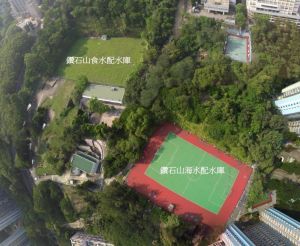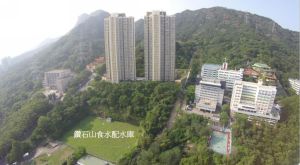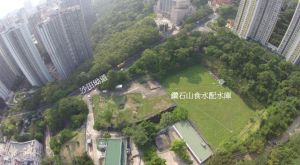|
The Government is working on all fronts to identify land in a proactive manner in order to meet various development needs of the society. Last week, I introduced in my blog the development potential of underground space. Next, I would like to talk about our cavern development plans. I have written before about our long-term work on cavern development and the “Relocation of Shatin Sewage Treatment Works to Caverns” project, the latter of which can release 28 hectares of valuable land to cope with the overall development of Sha Tin district in future. The detailed design and investigation works for the project are already underway. Today, I will introduce to you another project, namely the “Relocation of Diamond Hill Fresh Water and Salt Water Service Reservoirs (DHSRs) to Caverns”, so that you will better understand the work involved in identifying land and support our efforts.
In fact, there are both overseas and local precedents for accommodating service reservoirs in caverns. For instance, a water tank with a storage capacity of up to 22 000 cubic metres was built inside caverns in Steinan, Norway, as early as 1979. In 2009, the University of Hong Kong relocated two government salt water service reservoirs with a total storage capacity of 12 000 cubic metres to caverns so as to make way for its Centennial Campus development. This has achieved the multiple goals of pioneering the construction of service reservoirs in caverns in Hong Kong and preserving three historic buildings nearby.
Releasing four hectares of land
Located in the northern part of Wong Tai Sin and covering around four hectares of land, the DHSRs were commissioned in 1957. Diamond Hill was only a squatter area at that time, but has now developed into a mature residential community consisting of public housing, including Shatin Pass Estate, Tsz Lok Estate, Chuk Yuen North Estate, Pang Ching Court. Community facilities such as schools, hospitals and homes for the elderly are also provided in the area. If the two service reservoirs can be relocated to caverns, the existing site of around four hectares can be released for housing and other purposes that will benefit the community. It is such a rare opportunity that additional precious land resources can be provided in the urban area.
Under this vision, the Water Supplies Department (WSD) commenced in December 2014 the feasibility study for the relocation of the DHSRs to caverns. The relocation project will include forming caverns, constructing access tunnels to caverns and reprovisioning the service reservoirs. After examining the relevant technical considerations concerning geology, traffic, water supply, etc., we propose the cavern site be located inside the slope to the north of Chuk Yuen North Estate in Wong Tai Sin. The preliminary technical feasibility of the project has now been confirmed. The WSD has also worked with the Planning Department (PlanD) to conduct planning studies on the future use of the existing site of the service reservoirs. The studies have fully taken into account factors such as visual and ventilation impacts as well as the public views. The preliminary proposals are to make use of the four hectares of land to provide at least 2 500 housing units, along with suitable community facilities, to accommodate over 6 000 residents, while the seven-a-side soccer pitch on the existing site of the service reservoirs will be reprovisioned.
Stage 1 Public Engagement for the project was carried out from October 2015 to January 2016 to enable the local residents and the public to better understand the project details and express their views. The public views we received focus mainly on two areas. Firstly, there are concerns about the impact on the road traffic and the environment in the neighbourhood during the construction of caverns and new service reservoirs; secondly, there are requests that, when planning for the future use of the existing site of the service reservoirs, land should be reserved to provide additional medical services and community facilities in the area.
Launch of Stage 2 Public Engagement
The project team has incorporated the above public views into the preliminary proposals as appropriate, and with the assistance of the PlanD, Stage 2 Public Engagement is to be launched next month to further collect public views on the relocation project and the preliminary development proposals for the existing site of the service reservoirs. While we will put forward preliminary proposals for the future land use of the existing site for discussion, we will be open-minded on this issue and readily listen to the opinions of different stakeholders so as to gather useful ideas to fully utilise this piece of valuable land in the urban area. We expect to finish the feasibility study for the entire project in early 2017 following the completion of the public engagement exercise. If everything goes well, the existing site of the service reservoirs can be used for housing or other purposes in 2024/25 at the earliest.
Developing rock caverns to release land is a long-term task which has to be carried out in a steady and progressive manner. We hope that the relocation of the service reservoirs will be another successful example of achieving community enhancement through cavern development. At the same time, we will continue to strive to take forward other feasible cavern development projects to tie in with our multi-pronged strategy of increasing land supply, so as to meet the target of continuous and steady supply of land, and support the overall social and economic development of Hong Kong.
|
|
|
|
| The existing and proposed relocation sites of the Diamond Hill Fresh Water and Salt Water Service Reservoirs (DHSRs) |
 |
| The existing site of the DHSRs |
 |
| The surrounding areas of the DHSRs |
 |
| Other surrounding areas of the DHSRs |
|